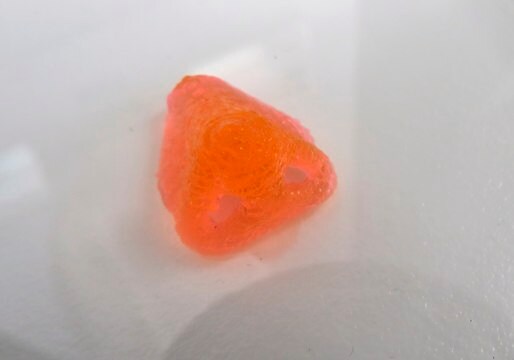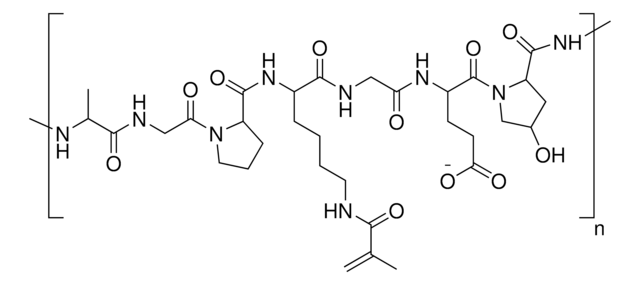927252
TissueFab® bioink
(GelAlgHA)MA Vis/405 nm, low endotoxin
Synonym(s):
AlgMA, GelMA, HAMA
About This Item
Recommended Products
description
HNMR in D2O at 40°C
Quality Level
form
(viscous liquid to gel)
impurities
<5 CFU/g Bioburden (Fungal)
<5 CFU/g Bioburden (Total Aerobic)
<50 EU/mL Endotoxin
color
pale yellow to colorless
pH
6.5-7.5
viscosity
10-30 cP(37 °C)
storage temp.
2-8°C
Looking for similar products? Visit Product Comparison Guide
General description
3D bioprinting is the printing of biocompatible materials, cells, growth factors, and the other supporting materials necessary to yield functional complex living tissues. Gelatin methacryloyl (GelMA) is a polymerizable hydrogel material derived from natural extracellular matrix (ECM) components. Due to its low cost, abundance, and retention of natural cell binding motifs, gelatin has become a highly sought material for tissue engineering applications. Hyaluronic acid (HA) is a linear polysaccharide of alternating D-glucuronic acid, and N-acetyl-D-glucosamine found in the extracellular matrix. HA is commonly chemically modified to form covalently crosslinked hydrogels. Alginate methacryloyl also known as AlgMA, is a polysaccharide widely used in tissue engineering obtained from brown algae.
Application
Low Endotoxin, low bioburden: Endotoxins have been demonstrated negatively impact cellular growth, morphology, differentiation, inflammation and protein expression. Bioburden is defined as the number of contaminated organisms found in a given amount of material. We test each lot for endotoxins as well as total bioburden (aerobic and fungal) to minimize unwanted interactions. For more information: https://www.sigmaaldrich.com/US/en/technical-documents/technical-article/microbiological-testing/pyrogen-testing/what-is-endotoxin
Packaging
Legal Information
related product
Storage Class Code
10 - Combustible liquids
WGK
WGK 3
Choose from one of the most recent versions:
Certificates of Analysis (COA)
It looks like we've run into a problem, but you can still download Certificates of Analysis from our Documents section.
If you need assistance, please contact Customer Support.
Already Own This Product?
Find documentation for the products that you have recently purchased in the Document Library.
Our team of scientists has experience in all areas of research including Life Science, Material Science, Chemical Synthesis, Chromatography, Analytical and many others.
Contact Technical Service







